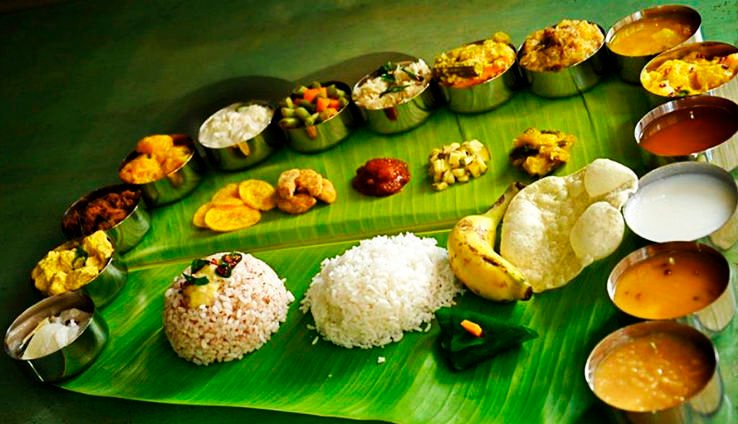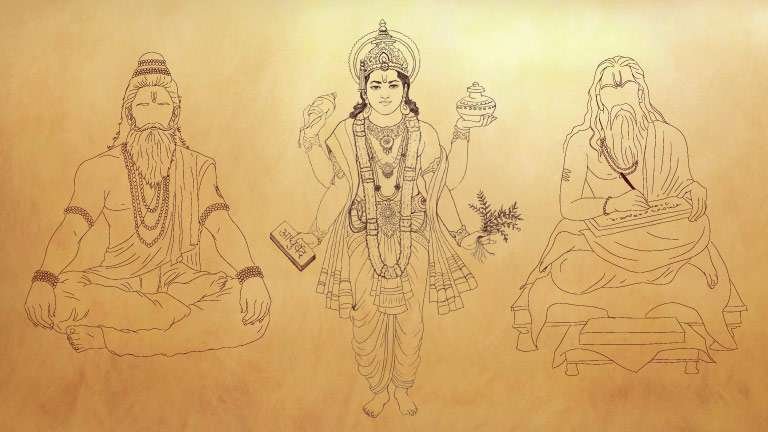Exploring the Richness of Indian Cuisine: Regional Variations, Ingredients, and Street Food
Exploring the Richness of Indian Cuisine: Regional Variations, Ingredients, and Street Food
Indian food and cuisine are widely popular and loved all around the world. With its rich flavors, diverse ingredients, and traditional cooking techniques, Indian food is a feast for both the senses and the soul. In this blog post, we will explore the various aspects of Indian food and cuisine in detail.

Introduction to Indian Food
Indian cuisine is a rich and diverse blend of spices, herbs, vegetables, and meats. It has evolved over centuries, influenced by the country’s geography, climate, religion, and cultural practices. Indian food is characterized by its bold flavors, aromatic spices, and intricate cooking techniques.
Regional Variations
India is a vast country with a diverse range of cultures and traditions, and its cuisine reflects this diversity. Each region has its own unique cooking style, ingredients, and flavors. Some of the most popular regional cuisines in India include:
- North Indian Cuisine – North Indian food is known for its rich and creamy gravies, tandoori dishes, and flatbreads like naan and paratha.
- South Indian Cuisine – South Indian food is characterized by its spicy curries, rice dishes, and coconut-based gravies. It is also known for its dosas, idlis, and uttapams.
- East Indian Cuisine – East Indian food is known for its seafood delicacies, sweets, and snacks. It uses mustard oil and mustard seeds as a primary ingredient in cooking.
- West Indian Cuisine – West Indian food is known for its spicy curries, street food, and seafood dishes. It also has a significant influence from Portuguese cuisine due to Goa’s historical Portuguese rule.
Ingredients and Spices
Indian cuisine uses a wide range of ingredients and spices that contribute to its unique flavor profile. Some of the most commonly used ingredients in Indian cooking include rice, lentils, vegetables, meats, and seafood. Spices like cumin, coriander, turmeric, cardamom, and cinnamon are used in varying combinations to create complex and delicious flavors.
Vegetarian and Non-Vegetarian Options
Indian cuisine offers a wide variety of vegetarian and non-vegetarian dishes. Many Indian vegetarians rely on lentils, beans, and vegetables for their protein intake, while non-vegetarians enjoy a range of meat and seafood dishes. Some of the most popular vegetarian dishes in Indian cuisine include chana masala, palak paneer, and aloo gobi, while non-vegetarian dishes include butter chicken, chicken tikka masala, and biryani.
Famous Indian Street Foods
India is known for its delicious street food, which is a must-try for any food lover. Some of the most popular Indian street foods include:
- Pav Bhaji – A delicious dish made with a spiced vegetable curry served with buttered bread.
- Chaat – A savory snack made with potatoes, chickpeas, and spices, topped with tamarind chutney and yogurt.
- Samosas – A crispy fried pastry filled with spiced potatoes, peas, and sometimes meat.
- Dosa – A crispy, savory pancake made with rice and lentil batter, filled with spiced potatoes or other vegetables.
Indian festival special foods
Diwali Sweets – Sweets like Gulab Jamun and Kaju Katli are high in calories and sugar, but they also contain healthy ingredients like nuts and milk. Nuts are a good source of protein and healthy fats, while milk is rich in calcium and other nutrients.
Holi Sweets – Sweets like Gujiya and Rasgulla are high in sugar and fat, but they also contain healthy ingredients like coconut and paneer. Coconut is rich in fiber and healthy fats, while paneer is a good source of protein and calcium.
Dussehra Specials – Dishes like Aloo Tikki and Sabudana Vada are fried and high in calories, but they are also rich in nutrients like potassium and fiber. Potatoes are a good source of potassium, while Sabudana or tapioca is a rich source of carbohydrates.
Navratri Specials – Dishes like Sabudana Khichdi and Kuttu Ki Puri are gluten-free and low in calories, making them a healthy option. Sabudana is a rich source of carbohydrates, while Kuttu or buckwheat is rich in fiber and essential amino acids.
Ganesh Chaturthi Sweets – Sweets like Modak and Ladoo are high in calories and sugar, but they also contain healthy ingredients like coconut and nuts. Coconut is rich in fiber and healthy fats, while nuts are a good source of protein and healthy fats.
Onam Sadhya – The traditional Onam feast includes a variety of vegetarian dishes made with vegetables and lentils, which are rich in fiber, vitamins, and minerals. Dishes like Avial, Thoran, and Payasam contain a variety of vegetables and lentils, providing a range of nutrients.
Janmashtami Sweets – Sweets like Dahi Handi and Panjiri are high in calories and sugar, but they also contain healthy ingredients like nuts and milk. Nuts are a good source of protein and healthy fats, while milk is rich in calcium and other nutrients.
Raksha Bandhan Sweets – Sweets like Ladoo and Barfi are high in calories and sugar, but they also contain healthy ingredients like nuts and milk. Nuts are a good source of protein and healthy fats, while milk is rich in calcium and other nutrients.
Pongal – The traditional Pongal dish made with rice, lentils, and jaggery is high in carbohydrates, but it is also rich in fiber and essential amino acids. Lentils are a good source of protein, while jaggery is a healthier alternative to sugar as it contains some nutrients like iron and calcium.
Baisakhi Specials – Dishes like Chole Bhature, Sarson Ka Saag, and Makki Di Roti are high in calories and fat, but they also contain healthy ingredients like chickpeas, mustard greens, and corn. Chickpeas are a good source of protein and fiber, while mustard greens are rich in vitamins and minerals. Corn is a good source of carbohydrates and fiber.
Navaratri Specials – Dishes like Singhare ke Atte ki Barfi and Sabudana Khichdi are gluten-free and low in calories, making them a healthy option for those with celiac disease or gluten sensitivity. Singhare or water chestnut flour is a good source of carbohydrates, while Sabudana or tapioca is a rich source of carbohydrates.
Including these festival special foods in moderation as part of a balanced diet can provide a range of nutrients and health benefits, especially when coupled with regular exercise and healthy lifestyle practices.

What is Indian cuisine?
Answer: Indian cuisine is a rich and diverse blend of spices, herbs, vegetables, and meats that has evolved over centuries, influenced by the country’s geography, climate, religion, and cultural practices.
What are the regional variations in Indian cuisine?
Answer: India is a vast country with a diverse range of cultures and traditions, and its cuisine reflects this diversity. Some of the most popular regional cuisines in India include North Indian, South Indian, East Indian, and West Indian cuisine.
What are the commonly used ingredients and spices in Indian cooking?
Answer: Indian cuisine uses a wide range of ingredients and spices that contribute to its unique flavor profile. Some of the most commonly used ingredients in Indian cooking include rice, lentils, vegetables, meats, and seafood. Spices like cumin, coriander, turmeric, cardamom, and cinnamon are used in varying combinations to create complex and delicious flavors.
What are the popular vegetarian and non-vegetarian options in Indian cuisine?
Answer: Indian cuisine offers a wide variety of vegetarian and non-vegetarian dishes. Many Indian vegetarians rely on lentils, beans, and vegetables for their protein intake, while non-vegetarians enjoy a range of meat and seafood dishes. Some of the most popular vegetarian dishes in Indian cuisine include chana masala, palak paneer, and aloo gobi, while non-vegetarian dishes include butter chicken, chicken tikka masala, and biryani.
What are some famous Indian street foods?
Answer: India is known for its delicious street food, which is a must-try for any food lover. Some of the most popular Indian street foods include Pav Bhaji, Chaat, Samosas, and Dosa.
- East Indian cuisine
- South Indian cuisine
- Indian street food
- Spices in Indian cooking
- Vegetarian Indian dishes
- Non-vegetarian Indian dishes
- Regional Indian cuisine
- Indian food flavors
- Indian food culture
- Traditional Indian cooking techniques.
Conclusion
In conclusion, Indian cuisine is a treasure trove of flavors and ingredients that has captivated the taste buds of food lovers all around the world. Its rich history, regional variations, and diverse ingredients make it a unique and exciting culinary experience. Whether you’re a vegetarian or a meat lover, there’s something for everyone in Indian cuisine. So next time you’re looking for a delicious and satisfying meal, consider trying some authentic Indian dishes!
Exploring the Richness of Indian Cuisine: Regional Variations, Ingredients, and Street Food



